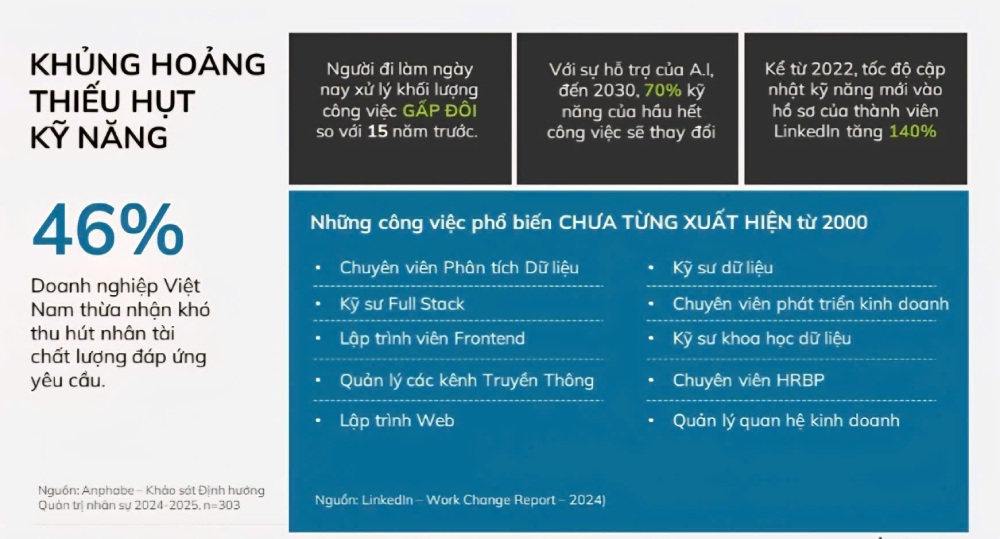According to the World Economic Forum (WEF), in 2025, about 85 million jobs may be lost to automation, but 97 million new jobs will also be created. Meanwhile, the IMF estimates that 40% of global jobs will be affected by AI by 2030, a figure that will increase to 60% in developed economies.
AI is increasingly clearly affecting intellectual work, which was once considered a difficult replacement. Writing, analyzing, and presenting strategies can now be partially or completely supported by AI. This situation is gradually showing itself in Vietnam when from the end of 2024, when there is continuous information about cutting and streamlining the team, not only in industries such as banking, finance, and manufacturing but also spreading to government agencies and long-term media units, Anphabe Company commented.
However, the replacement is not happening massively, but begins with the change in the capacity needs that organizations are aiming for in the AI era, leading to changes in skills.

According to Anphabe Company's forecast, 70% of the skills needed for current jobs will change by 2030. In Anphabe's survey, workers admitted to lacking confidence in future skills: 67% were not proficient in using AI effectively; 64% had poor data analysis skills; many people also underestimated themselves in their critical thinking, creativity and collaboration skills.
This skill gap not only exists between generations but is clear between industry groups. People working in the fields of technology, creativity, marketing... are often more proactive than traditional industry groups such as finance, accounting, human resources, but are also the industries most affected by AI.
Anphabe's survey shows that 67% of Vietnamese enterprises have applied AI to some extent. However, most AI projects today are still led by IT departments with 43% of cases implemented from the technical department.
This shows that AI is still being approached as a technology project rather than a comprehensive innovation strategy associated with culture, human resources and organizational goals.
In addition, many businesses are also facing familiar barriers: 40% of employees do not have enough time to learn how to use AI; 34% lack coordination between departments in the implementation process; 32% think that current AI tools still take time to get acquainted and proficient.
More importantly, only 53% of businesses have deployed AI and provided systematic training for employees. Of these, only 52% of workers are satisfied with the quality of training they receive.











